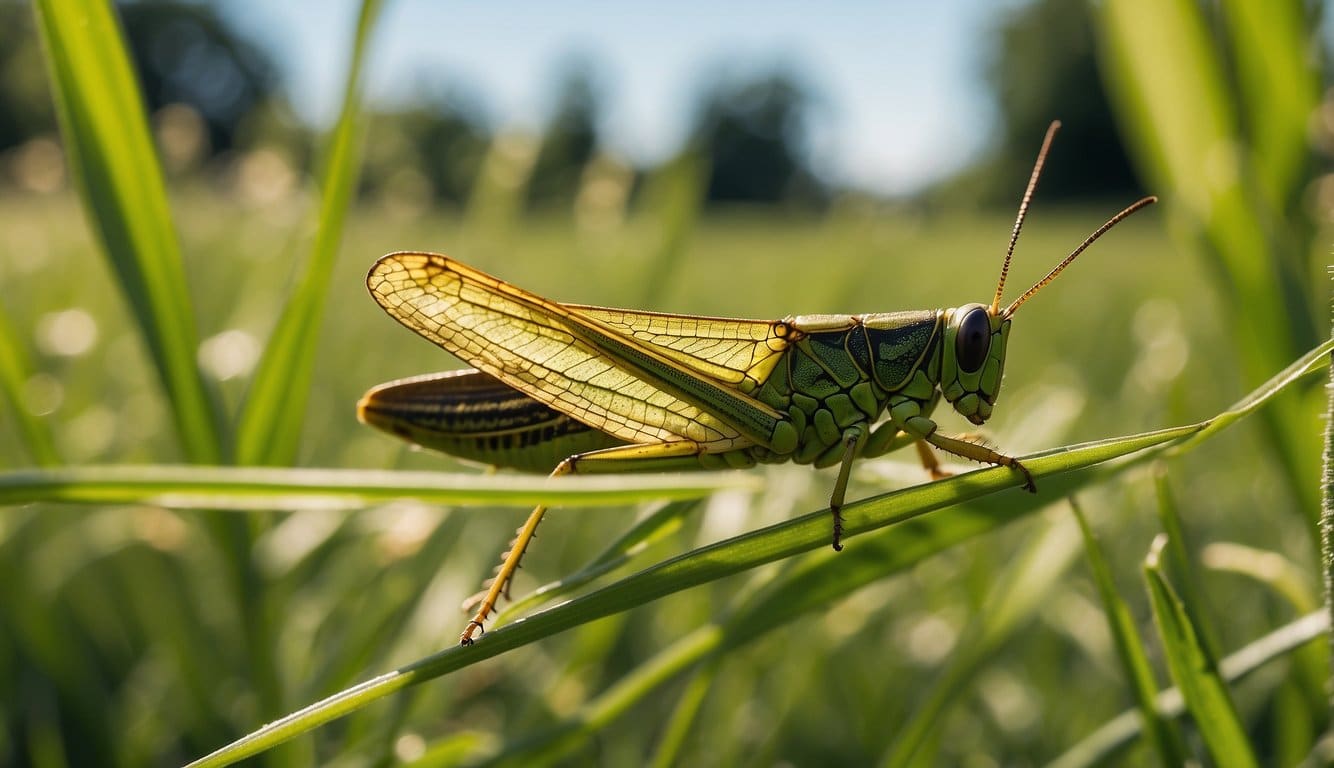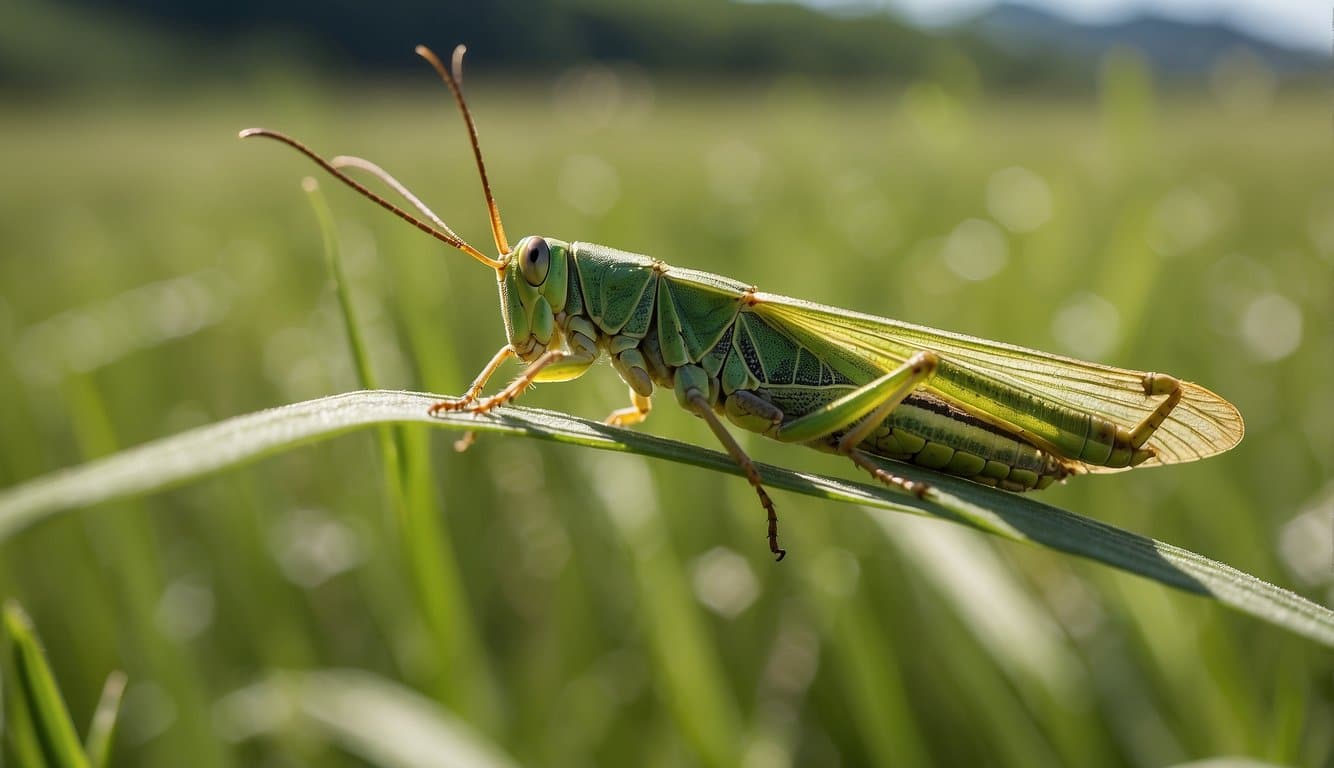| Question | How Long Do Grasshoppers Live? |
|---|---|
| Answer | About 5 to 6 months, depending on various factors. |
| More Info | Life Stages: From egg to adult, including wintering as eggs in colder climates.
Adult Lifespan: Typically 1 to 2 months of active, visible life.<br>- Influencing Factors: Predation, food availability, and weather conditions can affect their lifespan. |
Grasshoppers typically live for about 5 to 6 months, depending on the species and environmental conditions. Their lifespan encompasses several stages from egg to adult. In regions with colder climates, grasshoppers might spend most of this time as eggs through the winter, with adults emerging in the spring or summer.
The adult stage, which is most visible and active, usually lasts 1 to 2 months. Factors such as predation, food availability, and weather conditions can influence their survival rate and lifespan.
Grasshopper Lifespan Overview

Grasshoppers are fascinating insects with a lifecycle that varies widely across different species. The average lifespan of these hopping herbivores is typically about one year, but this time frame can fluctuate based on environmental factors and species-specific traits.
Life Stages:
- Egg: Begins as an egg, where vulnerability to predators is high.
- Nymph: Emerges as a nymph, resembling a small adult without wings.
- Adult: Reaches adult form, capable of flight and reproduction.
The survival rate from egg to nymph is approximately 50%. Predation is a significant threat at this stage, with many eggs failing to hatch and nymphs falling prey to predators.
For grasshoppers that reach adulthood, the lifespan can be quite brief. Many common species live for a few weeks to a couple of months. Adults are less vulnerable to predation, which allows them to survive longer, maximizing their chance for reproduction. In an ideal environment with fewer threats, some grasshoppers can live up to seven weeks or around 51 days.
Factors Affecting Lifespan:
- Predation
- Environmental conditions
- Disease
- Food availability
In the wild, the lifespan of grasshoppers is significantly impacted by these factors. Predation impacts the grasshopper at all stages of life, but especially as eggs and nymphs. Harsh weather conditions, disease, and scarcity of food also contribute to the mortality rate, curtailing the potential for a longer life. Despite these challenges, grasshoppers play a vital role in the ecosystem as both prey and consumer of plant material.
Most Grasshoppers Do Not Die Of Old Age
The lifespan of grasshoppers can be shaped by a variety of determinants, including the environment they inhabit, their specific species, and the levels of predation they face.
Environmental Factors
Environmental conditions such as temperature, humidity, and food availability significantly affect the lifespan of grasshoppers. Optimal temperatures enable better growth and reproduction, thus potentially extending their lives. Conversely, extreme temperatures and limited food can curtail their development and survival.
- Temperature: Warmer climates can accelerate life cycles.
- Food Supply: Abundant vegetation often leads to longer life expectancy.
- Humidity: Adequate moisture levels are crucial for survival.
Species-Specific Lifespans
Grasshoppers encompass around 18,000 species, each with its own characteristic lifespan. Life expectancies range from a few weeks to about a year, with some rare cases extending up to two years depending on the species.
- Short-lived species: May live just a few weeks.
- Longer-lived species: Can survive up to one year or slightly more.
Predation and Survival
Predation is a crucial factor in grasshopper longevity. After hatching, roughly 50% of grasshopper nymphs fall prey to predators. The absence of such threats can substantially elevate their chances of survival through their entire life cycle, which is approximately one year.
- Predators: Include birds, rodents, and insects.
- Nymph Survival Rate: About half of the nymphs typically survive predation.
Life Cycle Stages of Grasshoppers
The life cycle of grasshoppers encompasses three distinct phases: from the egg to the nymph and finally to the adult grasshopper. Each stage has unique characteristics and plays a crucial role in the development and survival of the species.
Egg Stage
A female grasshopper lays her eggs in soil or plant material, encapsulating them within a protective pod. Egg pods vary in size, typically containing between 10 to 300 eggs each. The eggs remain dormant until environmental conditions are favorable for hatching, which ensures the survival of the next generation.
Nymph Stage
Upon hatching, the grasshopper enters its nymph stage, resembling a miniature wingless adult. Nymphs go through a series of five to six molts, progressively growing larger and developing wings. This stage is essential for the grasshopper as it prepares for adulthood, with each successive molt bringing it closer to maturity.
Adult Stage
Once fully grown, the former nymph emerges as an adult grasshopper, complete with developed wings. It is at this stage that grasshoppers are most active, feeding and mating. Adult grasshoppers can live up to a year, contributing to the species’ propagation before completing their life cycle.
Frequently Asked Questions
These questions address common curiosities about grasshopper lifespans under varying conditions, exploring controlled environments to natural habitats.
What is the lifespan of a grasshopper in a controlled environment?
In a controlled environment, where threats from predators and harsh weather are minimized, grasshoppers may live up to a year, reaching the upper limit of their natural lifespan.
What is the duration of a grasshopper’s life cycle?
The life cycle of a grasshopper, from egg to adult, typically spans one season, around a few months to a year, depending on the species and environmental factors.
What is the average lifespan of grasshoppers in their natural habitat?
Grasshoppers usually live for about one year in their natural habitat, although this can vary widely depending on species, with some only surviving a few weeks while others may live up to six months.
How does the availability of food affect the lifespan of grasshoppers?
Abundant food resources can positively impact grasshopper longevity, providing the necessary nutrients for growth and development, while scarcity can reduce their lifespan.
How do environmental factors influence the longevity of grasshoppers living in water?
Grasshoppers do not live in water, as they are primarily terrestrial insects; however, environmental factors such as humidity and temperature can influence the lifespan of grasshoppers in nearby habitats.
Do grasshoppers have a different lifespan in various geographical regions?
Yes, grasshoppers may experience different lifespans in various geographical regions due to differing climates, predator populations, and food availability.
Last update on 2025-06-06 / Affiliate links / Images from Amazon Product Advertising API



